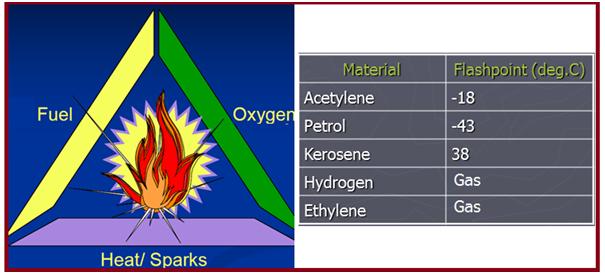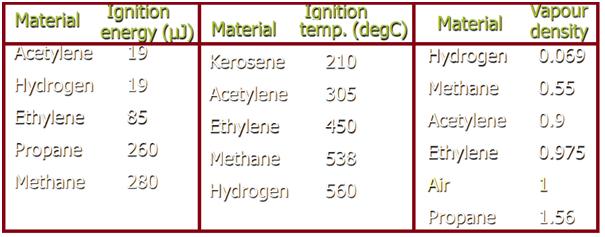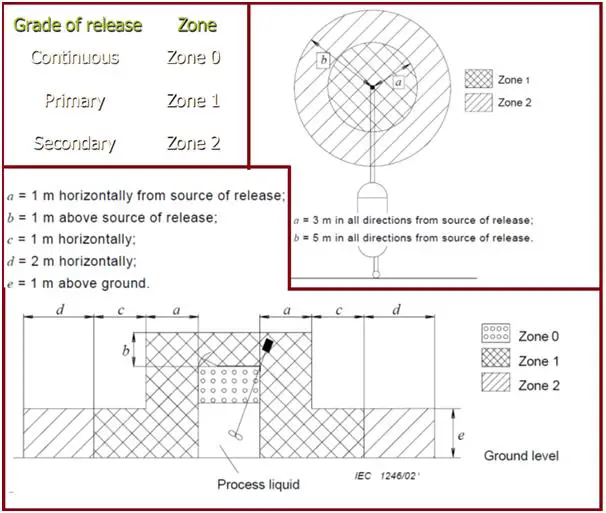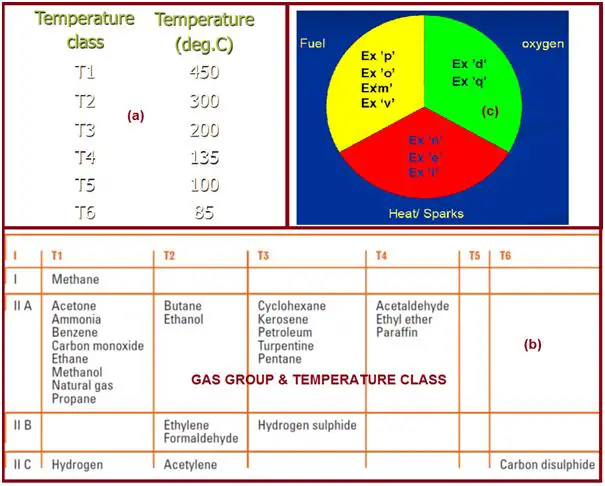Electrical Hazardous Area Classification Drawings
What is a hazardous area?
A hazardous area is an area in which an explosive gas atmosphere (flammable gases or vapors, combustible dust, flammable liquids, ignitable fibers, etc.) is present, or maybe expected to be present, in quantities such as to require special precautions for the construction, installation, and use of apparatus. The term hazardous area is associated with the installation of electrical and instrumentation equipment so that special design consideration is applied to meet special requirements considering the safety of the operating personnel.
What is Hazardous Area Classification?
Hazardous area classification is the scientific evaluation of facilities where the explosive environment is present and classify them following scientific and engineering principles. To ensure process safety, Hazardous area classification is of utmost importance. Normally, a hazardous area classification is presented on a plan view of plant drawings. These are also known as area classification drawings. To reduce the risk of fire and explosion, the electrical and electronic equipment is installed following the guidelines of hazardous area classification drawings.
During normal operations in chemical and petrochemical facilities small releases of flammable fluids inevitably happen from time to time. The aim of hazardous area classification is to avoid ignition of these releases. Area classification focuses on electrical equipment as a potential ignition source in a flammable atmosphere. The approach is to reduce to an acceptable minimum level the probability of coincidence of a flammable atmosphere and an electrical or other source of ignition.
Area classification is the division of a plant or installation into hazardous areas and non-hazardous areas. The hazardous areas are further subdivided into zones.
Purpose of Hazardous area classification
Hazardous area classification provides a basis for the selection and protection required for the electrical equipment appropriate to the defined areas. Area classification also helps for the safe positioning of other potential or continuous sources of ignition (eg. fired heaters, Internal combustion engines, gas /turbine drives ,plant roads, regulating temporary or portable equipment, etc.). It enables the selection of suitable electrical and instrumentation equipment to ensure a safe work environment.
In recent times, it is mandatory for chemical plants, oil refineries, LNG plants, sewerage treatment plants, paint manufacturers, distilling, offshore drilling rigs, Spray Booths, Petrochemical complexes, Laboratory and Fume Cupboards to prepare hazardous area classification drawings as hazardous gas vapors are normally present in all such industries.
Please note that it is not the aim of area classification to guard against the ignition of major releases under catastrophic failures of equipment eg. Rupture of a pressure vessel or a pipeline which have a low probability of occurrence. The risk mitigation for such large releases shall be carried out by proper layout, separation distances, facility sitings, and proper design, maintenance and operation of the plant.
Fire Triangle
Three elements are required to be present together to cause a fire or explosion. These are
- Fuel: This is what burns
- Oxygen: Required to support fire
- Ignition: Heat energy required to start a fire
Refer to Fig. 1 that shows these elements.
Fire/explosion can happen only if all three are present together in an appropriate proposition.
Gas properties
Flashpoint- The lowest liquid temperature at which, under certain standardized conditions, a liquid gives off vapours in a quantity such as to be capable of forming an ignitable vapour/air mixture. It is the vapour that mixes with air to form a flammable vapour.

Lower Explosive Level (LEL): Concentration of flammable gas or vapor in the air, below which the gas atmosphere is not explosive.
Upper Explosive Level (UEL): Concentration of flammable gas or vapor in the air, above which the gas atmosphere is not explosive.
Ignition energy (Fig. 2): Minimum energy of a spark that can ignite a flammable gas or vapour.
Ignition temperature (Fig. 2): The lowest temperature at which flammable gas or vapor gets ignited by itself.
Vapour density (Fig. 2): Density of a vapour or gas relative to the density of air, at same temperature and pressure.

Grades of hazardous release
The release of hazardous elements are grouped as follows:
- Continuous grade: Release which is continuous or is expected to occur frequently or for long periods. continuous grade release is present for more than 1000 hours per year (>1000 hours per year). Eg: Light hydrocarbon interceptor, seal of floating roof tank, area inside a tank, sump, etc.
- Primary grade: Release which can be expected to occur periodically or occasionally during normal operation ( > 10 hours per year to < 1000 hours per year). Eg: Sampling points, equipment nozzle
- Secondary grade: Release which is not expected to occur in normal operation and, if it does occur, is likely to do so only infrequently and for short periods (<10 hours per year). Eg: Piping flanges and valves, instrument fittings, etc.
Such grading is not dependant on the total rate of release or the characteristics of the released material, but only the probability of the release. Also, some sources may be considered to have a dual grade release with a small continuous or a primary grade and a large secondary grade eg. vent with a dual purpose or a pump seal.
Steps for Hazardous Area Classification
Following are the general steps for hazardous area classification:
- All potential leak sources in the area under review are determined like vents, pump seals, flanges, sample points, instruments etc.
- For each potential leak source the grade of release is determined (that is no. of hours per annum that the leak of flammable material can be expected to occur.
- The degree of ventilation in the area around the potential leak source is established (whether there is adequate ventilation or not).
- Together it is the grade of release and the degree of ventilation near the potential leak source that determine the type of hazardous zone around the leak source.
- The hazard radius around the potential leak source is determined from the category of the fluid leaking .The hazard radius forms a horizontal circle around the potential leak and is valid at the elevation of the leak.
- From the hazard radius and based on whether the release is lighter or heavier than air and the presence / absence of platforms – the extent of the three dimensional hazardous zone around the potential leak source is determined.
- In a similar way, the hazardous zones from all potential leak sources is determined and superimposed. This gives contours of hazardous area for the concerned facility both in the horizontal and vertical planes.
Hazardous area classification guide
Two widely used systems are followed in industries for hazardous area classification.
- the Class/Division system and
- the Zone system
While Canada and the United States predominantly use the class/division system, other parts of the world use the zone system of Hazardous area classification. In the below paragraphs, we will explore the hazardous area zone classification.
Hazardous Area Zone Classification
The Zone system of hazardous area classification, defines the probability of the hazardous material, gas or dust, being present in sufficient quantities that can generate explosive or ignitable mixtures. Refer to Fig.3 that shows the hazardous area zone classification based on hazardous gas release grade. There are three zones, Zone 0, Zone 1, and Zone 2.
The grade of release determines the designation of hazardous zones in the immediate vicinity of the release. In open air situations with adequate ventilation a secondary grade release will lead to a zone 2, a primary grade release will lead to a zone 1 and a continuous grade release will lead to a zone 0

Zone classification will be influenced by ventilation also. IEC 60079-10 categorises ventilation degree as High, medium and low. Poor ventilation may push the zone higher by one level. Poor ventilation may result in a more stringent zone while, with high ventilation the converse will be true. A secondary grade source of release may give rise to a Zone 1 if local ventilation is restricted. (Example in a sump).
Adequate Ventilation is defined as ventilation sufficient to avoid flammable atmosphere within sheltered or enclosed area. This will normally be achieved by a uniform ventilation rate of 12 air changes per hour with no stagnant areas.
Depending on the presence of combustible dusts or ignitable fibers and flyings, the hazardous area is classified in three zones: Zone 20, Zone 21 and Zone 22.
In both the above zone classification the probability of explosion severity reduces when we move from zone 0 (or zone 20) to zone 2 (zone 22).
The extent of the Hazardous area zone
Distance in any direction from the source of release to the point where the gas/air mixture has been diluted by air to a value below the lower explosive limit. Refer to Fig. 3 above that shows a typical example of a hazardous area zone extents.
- Pressure breathing valve (Fig. 3) in the open air, from process vessel.
- A fixed process mixing vessel (Fig. 3); liquids are piped into and out of the vessel through all-welded pipework flanged at the vessel.
For a given release the extent of the zone will vary with the vaporizing potential of the fluid release, the ventilation rate and the buoyancy of the vapor. The 3rd edition of IP 15 provides three methods for determining the extent of hazardous zones:
- Direct Example Approach – limited to common facilities in open areas
- Point Source Approach- release rates are dependent on process conditions
- Risk-based Approach- an optional rigorous methodology which may reduce the hazardous area determined by the point source approach
Fluid Category of Petroleum Products
The hazards radius for each point of release is a function of fluid characteristics (vapor forming potential) under the circumstances of the release, the release rate and the rate of vaporization. The hydrocarbon fluids are classified into below four fluid categories based their vaporizing potential.
| Fluid Category | Description |
| A | A flammable liquid that on release would vaporize rapidly and substantially. This category includes: (a)Any LPG or lighter flammable liquid; (b)Any flammable liquid at a temperature sufficient to produce, on release, more than 40% vol. vaporization with no heat input other than from surrounding. |
| B | A flammable liquid, not in ccategory A, but at a temperature sufficient for boiling to occur on release. |
| C | A flammable liquid, not in Category A and B, but which can on release be at a temperature above its flash point or form a flammable mist or spray. |
| D | Flammable gas or vapor (Natural Gas, Hydrogen, etc) |
With the fluid category leaking from the particular leak source established, now the extent of vapour travel (radii) around the leak source can be determined.
Hazardous Area Classification Drawing
The hazardous area classification drawings are in sufficient scale to show all the main items of equipment and all the buildings in both plan and elevation. The boundaries of all hazardous area and zones present shall be clearly marked using the clear shading convention for Zone 0, Zone 1, and Zone 2.
It has to be recognized that however well protected electrical equipment may be, there will always be residual risk if it is placed in areas where explosive atmospheres may occur.
Electrical Equipment Selection in Hazardous Area Classification
Once the Hazardous Area classification of a facility is determined, it is used as a basis for selecting suitable electrical equipment. To reach the intended level of safety, equipment must then be installed correctly, operated within its design envelop and maintained adequately.
As a general policy, electrical equipment should not be located in a hazardous area if it is possible to place it in a non-hazardous area, nor should be placed in Zone 1 if it can be placed in zone 2. The installation and maintainance requirements for electrical equipment in Zone1 locations are more stringent than for Zone 2 locations and Zone 0 are more stringent than Zone 1 locations.
ATEX directives for electrical apparatus for hazardous areas distinguish between two equipment groups as listed below:
- Group I – For use in mines (Methane)
- Group II – Other than mines
Sub-divisions in group II based on ignition energy requirement
- IIA – Atmospheres containing acetone, ammonia, ethyl, alcohol, gasoline, methane, propane or similar gases
- IIB – Atmospheres containing ethylene, acetaldehyde or similar gases
- IIC – Atmospheres containing acetylene, hydrogen or similar gases
Hazardous area – Temperature class
Classification based on ignition temperature (Fig. 4 (a)) of gas or vapour. The maximum surface temperature of selected equipment not to exceed the limiting value.

Sour area
The area with H2S (Hydrogen Sulphide) concentration above 50 ppm. H2S is highly toxic even in very low concentration
Properties:
- LEL – 4% (40,000ppm)
- UEL – 46%
- Autoignition temperature – 260degC
- Gas group IIB
- Sour areas with H2S concentration below 4% in process stream need not be classified as a hazardous area
The Ingress Protection or IP rating
Ingress of moisture or other material could affect electrical equipment and cause it to break down electrically and possibly cause arcs and sparks which could be possible sources of ignition. Also personnel protection is required against contact with internal live or rotating parts inside the enclosure, and to the apparatus against ingress of solid objects, dusts etc.
The IP rating (or International Protection Rating, sometimes also called Ingress Protection Rating) provide users more detailed information than vague terms such as waterproof. The IP rating consists of the letters IP followed by two digits.
The first digit indicates the level of protection the fixture provides it's internal parts (electrical and moving parts) from the ingress (interaction or contact) of solid foreign objects (like dust). The second digit indicates the protection of the equipment inside the fixture against harmful ingress (contact) with water.
Examples of IP Rating
- IP44 is protected against solid objects greater than 1mm (0.04 inches) and liquid sprays from all directions.
- IP64 is protected against liquid sprays from all directions.
- IP65 is protected against liquid low pressure jets of water from all directions
- IP66 is protected against strong jets of water from all directions
Codes and Standards for Hazardous Area Classification
Codes and standards define minimum electrical design and installation requirements for electrical equipment to be used in hazardous areas. The following codes and standards provide detailed guidelines for Hazardous Area Classification for industries
- IEC 60079 series
- IP 15
- API 505
- DEP 80.00.10.10
- ATEX – EU Directives
The hazardous area classification and location of equipment must be ascertained before the choice of appropriately certified electrical equipment is made.
References and Further Reading for Hazardous Area Classification Guide
- https://www.emerson.com/documents/automation/product-bulletin-hazardous-area-classifications-protections-en-123358.pdf
Few more useful resources for you…
What is Engineering Process Safety?
Safety Rules during A Field Visit By A Design Engineer
An article on Crane safety during Construction
HAZOP (Hazard and Operability) Study: A brief introduction
An article on Excavation Hazards at Construction Sites
Hazardous Area- Theory, Classification and Equipment selection: A short presentation
An article on THE HAZARDS OF PRESSURE TESTING

Electrical Hazardous Area Classification Drawings
Source: https://whatispiping.com/hazardous-area-classification/
Posted by: morasuld2000.blogspot.com

0 Response to "Electrical Hazardous Area Classification Drawings"
Post a Comment